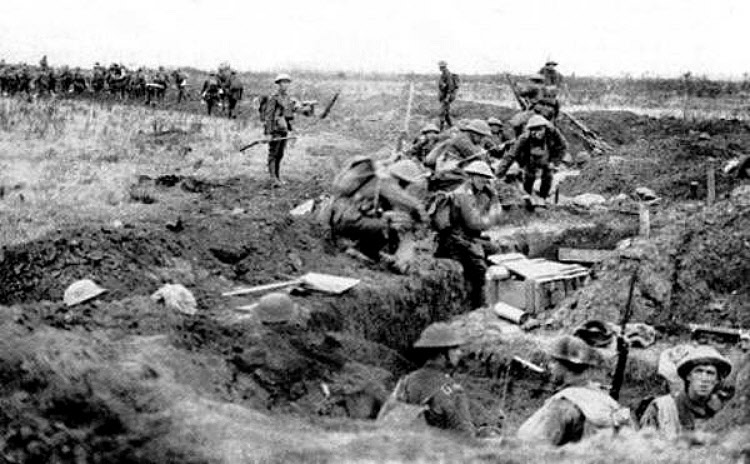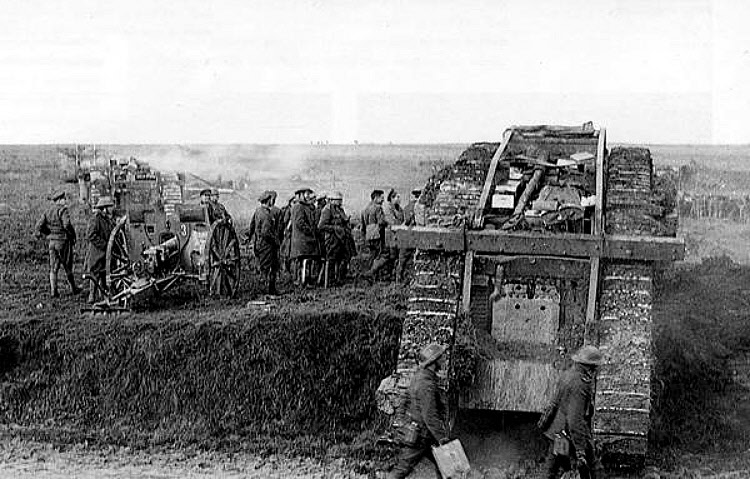
Harry Gillion was born in 1879, the son of David Gillion and Rachel (nee Howroyd) who were married in late 1871 in the Dewsbury registration district. In 1881, the Gillion family were living with their three children: Mary Elizabeth (7), Wigglesworth (3) and Harry (1) in Owl Lane, Gawthorpe , close to the then Wesleyan Chapel, now the premises of the Salvation Army. David Gillion was a grocer and a draper. By 1891, the Gillions have moved to premises on High Street, Gawthorpe, two doors away from the Boot & Shoe Beerhouse where the family lived and David Gillion ran his grocery business. All three children are still at home: Mary Elizabeth is working as a weaver; Wigglesworth is working as a printer and 12 year-old Harry is still at school.
David Gillion died in the December quarter of 1894 in Gawthorpe at the age of 56 and in 1901 Rachel Gillion, his widow, was living on High Street, Gawthorpe and had taken over her late husband’s grocery business. Daughter Mary Elizabeth is now working as her mother’s assistant in the family business. Harry is now aged 21 and is working as a mill-hand with his elder brother, Wigglesworth Gillion (24) working as a printer/compositor.
In 1911, Harry Gillion, now aged 30, was living with his 74 year-old widowed mother Rachel, a shopkeeper, with house and premises at 31 High Street, Gawthorpe, Ossett. Harry was working as a woollen spinner. His sister Mary Elizabeth Gillion (38) was still at home and was working as an assistant in the family grocery business. Rachel Gillion died, aged 76, in late 1913.
Harry’s elder brother, Wigglesworth Gillion married Elsie Hope in 1905 (registered in Chorlton) and they moved to live in Stretford, Old Trafford, Manchester where, by 1911, they had three children, including a son, Harry Gillion born in 1909. Wiggleworth was working as a Letterpress printer/ compositor. A fourth child, Allan Gillion was born in 1914.
Private 34096 Harry Gillion of the 2/5th Battalion, KOYLI, which was part of 187th (2/3rd West Riding) Brigade was killed in action on the 20 Nov 1917 at the start of the Battle of Cambrai. The 2/5th KOYLI arrived in France on 15th January 1917 and became part of the 62nd (2nd West Riding) Division.

Above: British soldiers in a captured German trench at Havrincourt on the 20th November 1917.
On the 20th November 1917, the opening day of the battle, 62 Division broke through both the Hindenburg Main and Support Lines, occupying Havrincourt and Graincourt, and by the end of the day had crossed the Bapaume to Cambrai road (N30) to within the reach of the woods on Bourlon Ridge (127m asl). This represented an advance of 7 kilometres in one day, an outstanding achievement at that time. The British lost on the first day around 4,000 casualties and took 4,200 German prisoners. 180 Tanks were put out of action, although only 65 had been destroyed. Of the other casualties, 71 tanks had suffered mechanical failure and 43 had ditched. However, the British had failed to reach their main target, Bourlon Wood.

Above: Tank near Bourlon Wood on 23rd November 1917.
The action by Private Gillion’s 187th Infantry Brigade on the 20th November 1917 1 is described in more detail below:
“In the meantime the two leading Battalions of the 187th Infantry Brigade (2/4th K.O.Y.L.I. on the right and the 2/5th K.O.Y.L.I. on the left) had similarly swept forward in line with the advance of the 135th Brigade.”
“Thus the whole of the Blue Line along the front of the Division was completely captured, the Battalions holding it, being from right to left: 2/8th West Yorks., 2/6th West Yorks., 2/4th K.O.Y.L.I. and 2/5th K.O.Y.L.I.”
“Casualties of the 2/5th K.O.Y.L.I. were as follows: Officers – three killed, five wounded, two wounded (at duty) and one wounded and missing; other ranks: twenty two killed, 146 wounded, wounded and missing, four, missing nineteen.”
His medal Card shows only that he was awarded the Victory and British medals. The absence of the 1915 star medal indicates that he did not serve abroad before December 1915, though he may have enlisted much sooner. His service record has not survived although details have survived of his last Will and Testament:
“Harry Gillion of 29, Cross Street, Gawthorpe , Ossett, Yorkshire, a private in the King’s Own Light Infantry died on or since 20 November 1917 in France. Administration: Wakefield 28 March 1918 to Mary Elizabeth Gillion, spinster. Effects: £63 5s 3d.”
Wiggleworth Gillion also served in WW1. He was 37 years of age in 1914. He joined the Liverpool Regiment (Private 75787) and was transferred to the Labour Corps (Private 51187). He was awarded the British and Victory medals indicating that he served overseas albeit after 31 December 1915. His service record has not survived. Wigglesworth Gillion survived WW1 and died in 1950 at the age of 73. His death was registered in Blackpool.
Private Harry Gillion is remembered on Cambrai Memorial 2, Louverval, northern France on Panel 8. The small village of Louverval is on the north side of the D930, Bapaume to Cambrai road, 13 kilometres north-east of Bapaume and 16 kilometres south-west of Cambrai. The Memorial stands on a terrace in Louverval Military Cemetery, which is situated on the north side of the D930, south of Louverval village. CWGC signposts on the D930 give advance warning of arrival at the Cemetery. The Cambrai Memorial commemorates more than 7,000 servicemen of the United Kingdom and South Africa who died in the Battle of Cambrai in November and December 1917 and whose graves are not known.
Sir Douglas Haig described the object of the Cambrai operations as the gaining of a ‘local success by a sudden attack at a point where the enemy did not expect it’ and to some extent they succeeded. The proposed method of assault was new, with no preliminary artillery bombardment. Instead, tanks would be used to break through the German wire, with the infantry following under the cover of smoke barrages.
The attack began early in the morning of the 20th November 1917 and initial advances were remarkable. However, by the 22nd November, a halt was called for rest and re-organisation, allowing the Germans to reinforce. From the 23rd to the 28th November, the fighting was concentrated almost entirely around Bourlon Wood and by the 29th November, it was clear that the Germans were ready for a major counter attack. During the fierce fighting of the next five days, much of the ground gained in the initial days of the attack was lost.
For the Allies, the results of the battle were ultimately disappointing but valuable lessons were learnt about new strategies and tactical approaches to fighting. The Germans had also discovered that their fixed lines of defence, no matter how well prepared, were vulnerable.
References:
1. “History of the 62nd (West Riding) Division, 1914-1919” by Everard Wyrall, Naval & Military Press Ltd (2003)